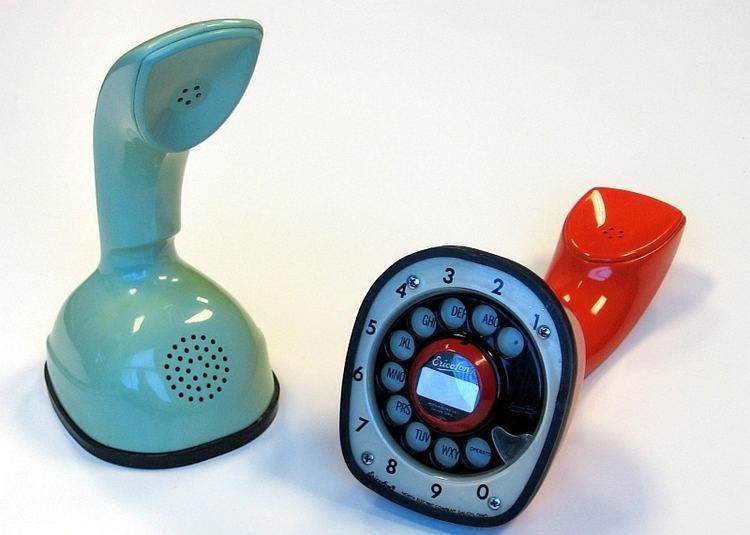 | ||
Ericofon telephones 1970 s
The Ericofon is a one-piece plastic telephone created by the Ericsson Company of Sweden and marketed through the second half of the 20th century. It was the first commercially marketed telephone to incorporate the dial and handset into a single unit. Because of its styling and its influence on future telephone design, the Ericofon is considered one of the most significant industrial designs of the 20th century. It is in the collection of the Museum of Modern Art in New York City. In Sweden, the Ericofon is known as the cobra telephone for its resemblance to a coiled snake.
Contents
- Ericofon telephones 1970 s
- Ericofon north electric galion telephone repair www a1 telephone com 618 235 6959
- History
- Design
- Colors
- Ericotone
- Touch tone
- Recent production
- Media appearances
- References
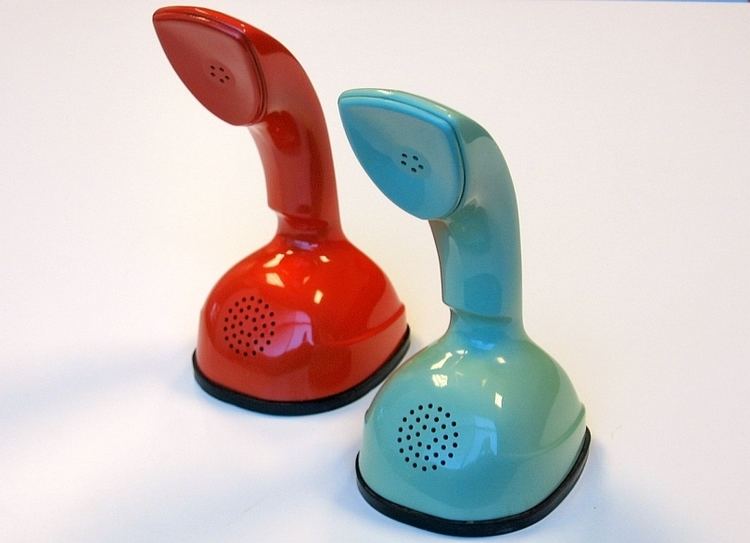
Ericofon north electric galion telephone repair www a1 telephone com 618 235 6959
History
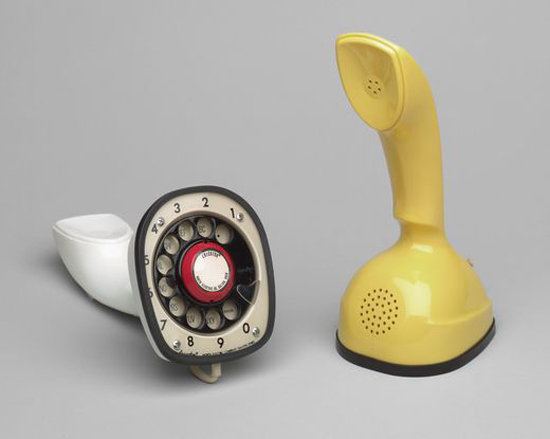
The Ericofon was designed in the late 1940s by a design team including Gösta Thames, Ralph Lysell, and Hugo Blomberg. The two major components of the telephone, the handset and the dial, are combined in a single unit. This one-piece design anticipated the evolution of the typical cordless phone and cell phone by several decades. Serial production began in 1954. Early models were sold only to institutions, but in 1956 production for the open market began in Europe and Australia.
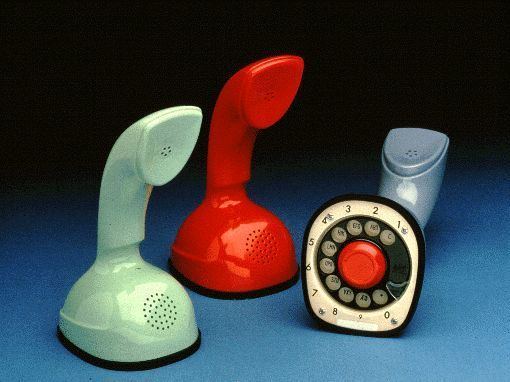
As the Bell System did not permit the operation of third-party equipment on their network, the Ericofon could only be used by independent telephone companies in the United States. North Electric in Galion, Ohio manufactured the Ericofon for the North American independent market.
Design
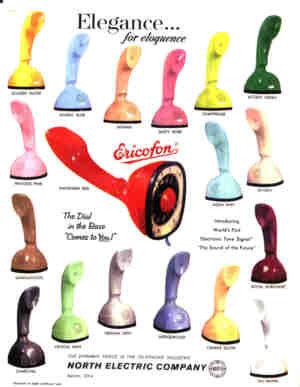
The original phone was produced in two slightly different designs. The earliest version is slightly taller, with the earpiece at nearly a 90-degree angle to the base. A later version has a shorter handle, with the earpiece angled slightly downward. The two versions are referred to as the old case and the new case. The old case was molded in two pieces, while the new case was molded as a single piece. Both versions were initially produced in 18 colors. They used the four-prong plug common in the United States at the time.
A third version, the model 700, was produced beginning in 1976. It is easily distinguished from earlier Ericofons by its squarish design, as well as changes to the handle and plug.
Colors
When it was introduced on the U.S. market, the Ericofon was available in 18 colors, but after transfer of production to North Electric, the number of colors was reduced to eight. A small number of phones with clear and metallic finishes were produced for special promotions. The most popular and widely produced colors were bright red and bright white. Other colors included various pastel shades of blue, green, and pink. The phone was never produced in black.
Ericotone
Most Ericofons had mechanical rotary dials, typical of all phones made in the era. While Ericofons produced by Ericsson used miniature buzzers as ringers, North Electric introduced the electronic "Ericotone" ringer. The Ericotone ringer used a simple, one-transistor oscillator circuit to produce a distinctive "chirping" sound. This was one of the earliest uses of a transistor in a telephone; telephones with mechanical bell ringers and rotary dials did not need transistors.
Touch-tone
North Electric introduced a touch-tone version of the Ericofon in the United States in 1967. Production of this variant was much lower than that of the rotary-dial Ericofons. A design flaw in the hook switch mechanism can cause the touch-tone version of the phone to become unusable if it is set down too forcibly. North Electric ceased production of the Ericofon for North America in 1972.
Ericsson introduced a push-button version of the Ericofon, the model 700, for the company's 100th anniversary in 1976. The model 700 had a squarer design than earlier models. It was not a touch-tone phone. Instead, its electronics generated electrical pulses as its buttons were pressed, simulating the pulses produced by a rotary dial. Ericsson continued to produce rotary-dial Ericofons until about 1980.
Recent production
Wild and Wolf produces an Ericofon-lookalike called "Scandiphone". The modern touch-tone phone is available in several colors and can be bought from web stores.
Media appearances
The Ericofon has been seen in several feature films and TV shows, mostly in the 1960s and 1970s.
